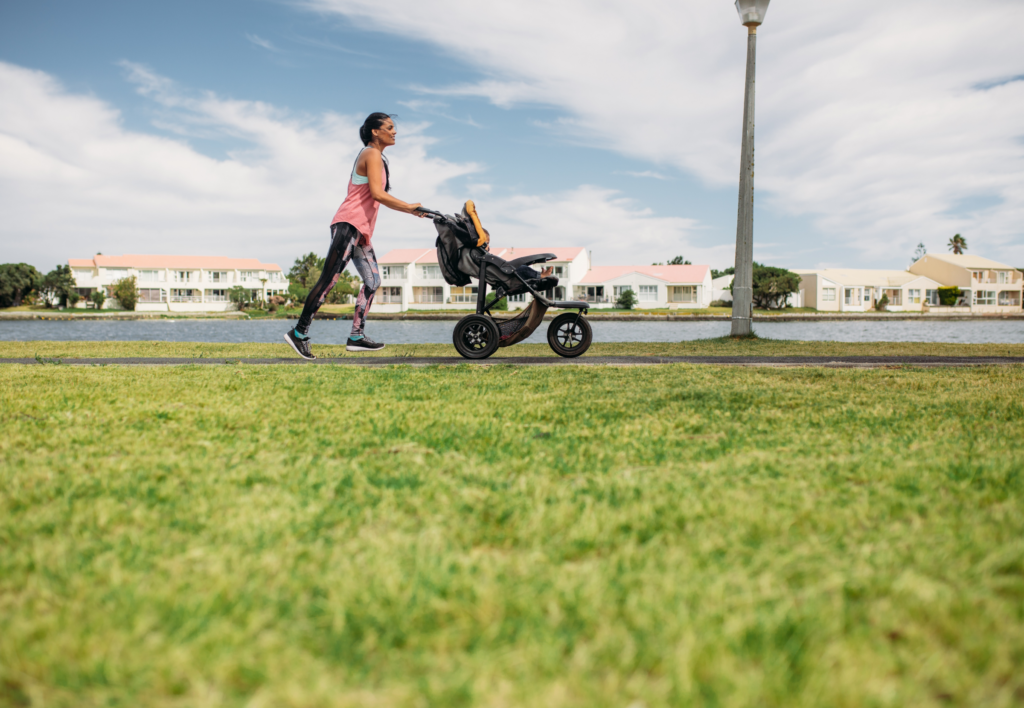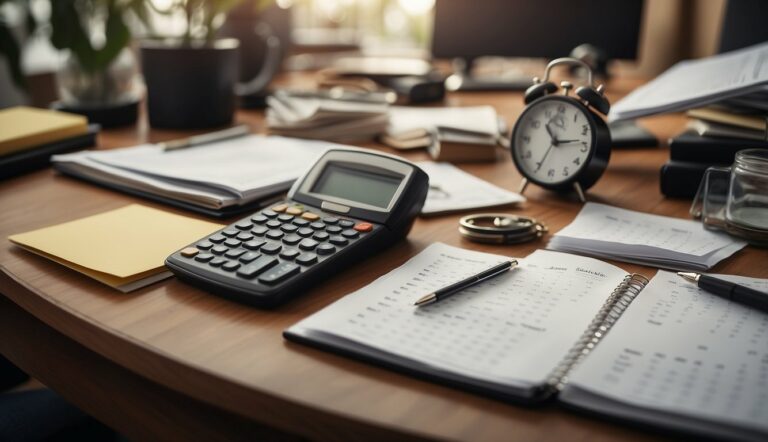Couch to 5K for Postpartum Mothers: A Safe Return to Running
Embarking on a running journey after giving birth can be a challenging yet rewarding endeavor. As a UESCA certified running coach, I often recommend the Couch to 5K program for postpartum mothers seeking a structured and supportive return to fitness. This program is designed to gradually build endurance and strength, ensuring a safe and successful re-entry to running.
Many new mothers wonder about the right time to start running postpartum. It is crucial to get clearance from your healthcare provider before beginning any exercise routine, especially after childbirth. Once you have the green light, the Couch to 5K program can serve as an excellent guide, with its progressive approach adapting to your body’s postpartum recovery process.
To maximize the success of your postpartum running journey, it’s important to listen to your body and adjust the program as needed. Begin with short sessions that combine walking and running, and gradually increase the running intervals. Rest and recovery days are just as important as workout days to avoid injury and allow your body to heal, particularly after a C-section.
With patience and persistence, reaching a 5K milestone postpartum is not only achievable but can also contribute to your overall well-being and sense of accomplishment.
Before You Start the Couch to 5k – 10 Postpartum Health Considerations
Postpartum women should consider several important health factors before starting a running program like Couch to 5K to ensure their safety and well-being:
- Doctor’s Clearance: It’s essential to get clearance from a healthcare provider before starting any postpartum exercise program. They can advise on an appropriate timeline based on individual recovery and any complications experienced during childbirth.
- Pelvic Floor Health: Pregnancy and childbirth can weaken the pelvic floor muscles. Running too soon can exacerbate issues like incontinence or pelvic organ prolapse. Consulting with a pelvic floor physical therapist can be beneficial.
- Abdominal Separation (Diastasis Recti): Many women experience diastasis recti during pregnancy. Before starting high-impact activities like running, it’s important to address any significant separation through targeted exercises to strengthen the core.
- Breast Comfort: Breastfeeding can cause breasts to be fuller and more sensitive. A supportive bra is crucial to minimize discomfort while running.
- Joint Stability: Relaxin, a hormone that increases joint laxity, can remain in the body for up to six months postpartum or longer if breastfeeding. This can increase the risk of joint injury, so a gradual return to high-impact exercise is advised.
- Energy Levels and Sleep: New mothers often experience disrupted sleep and increased fatigue. It’s important to consider energy levels and ensure adequate rest to support the physical demands of running.
- Nutrition and Hydration: Proper nutrition and hydration are especially important for postpartum women, particularly those who are breastfeeding. Caloric needs are higher, and hydration is crucial to maintain milk supply and overall health.
- C-Section or Other Complications: Women who have had a C-section or other birth-related complications may require a longer recovery period before engaging in high-impact activities. It’s important to follow medical advice and allow the body ample time to heal.
- Emotional Well-being: Postpartum women should monitor their emotional health, as physical activity can impact mental well-being. Running can be beneficial for reducing stress and improving mood, but it’s important not to add undue pressure to quickly regain pre-pregnancy fitness.
- Time and Scheduling: Finding time to exercise with a new baby can be challenging. It’s important to have a flexible approach and adjust expectations based on the new demands of motherhood.
Each woman’s postpartum journey is unique, and what works for one may not work for another. It’s crucial to listen to the body, progress at a comfortable pace, and adjust the running program as needed to accommodate the body’s postpartum changes.
The Best Postpartum Couch to 5k Running Plan
Creating the best postpartum Couch to 5K running plan involves balancing the gradual progression of the traditional program with the specific needs and considerations of a postpartum body. Here’s a general framework that can be adapted based on individual circumstances and after obtaining medical clearance:
Weeks 1-2: Establishing a Routine
- Focus: Begin with walking to improve cardiovascular fitness without putting too much strain on the body.
- Activity: Start with 15-20 minutes of brisk walking, 3-4 times a week.
- Goal: Build a habit of regular exercise and assess how your body responds to physical activity.
Weeks 3-4: Introducing Running Intervals
- Focus: Gradually introduce running intervals, ensuring they are short and manageable.
- Activity: Alternate 1 minute of gentle jogging with 4 minutes of walking, for a total of 20-30 minutes.
- Goal: Start building running endurance while continuing to prioritize pelvic floor health.
Weeks 5-6: Increasing Running Time
- Focus: Slowly increase the duration of running intervals while maintaining walking breaks.
- Activity: Alternate 2 minutes of running with 3 minutes of walking, for a total of 25-30 minutes.
- Goal: Continue to build endurance and strength with a cautious increase in running time.
Weeks 7-8: Expanding Continuous Running
- Focus: Transition to longer periods of continuous running with shorter walking breaks.
- Activity: Run for 5 minutes followed by 2 minutes of walking, gradually reducing walking time as comfort allows.
- Goal: Prepare the body for sustained running periods without compromising form or pelvic floor health.
Weeks 9-10: Running with Minimal Walking
- Focus: Aim for more continuous running while listening to the body’s signals.
- Activity: Run for 8-10 minutes, walk for 1-2 minutes, and repeat, aiming to decrease walking intervals over time.
- Goal: Develop the stamina to run for longer stretches while maintaining a pace that feels comfortable and sustainable.
Weeks 11-12: Running a 5K
- Focus: Build up to running a full 5K distance at a comfortable pace.
- Activity: Start with running for 20 minutes non-stop and gradually increase each session by 5 minutes until reaching the 5K distance.
- Goal: Successfully complete a 5K run, focusing on completion rather than speed.
Throughout the program, it’s important to maintain a focus on:
- Pelvic Floor Exercises: Engage in regular pelvic floor exercises to strengthen these muscles and support running activities.
- Core Strengthening: Incorporate postpartum-safe core exercises to support the back and improve running posture.
- Stretching and Recovery: Include stretching before and after runs to maintain flexibility and aid in recovery.
- Hydration and Nutrition: Stay well-hydrated and consume a balanced diet, especially if breastfeeding, to support physical activity and recovery.
Remember, this plan is a guideline and should be adjusted based on individual recovery, comfort, and any advice given by healthcare professionals. It’s essential to progress at a pace that feels right for your body and to prioritize overall health and well-being.

Common Couch to 5k Program Variations for Postpartum Women
For postpartum women, the Couch to 5K program can be adapted to accommodate the unique recovery needs after childbirth. Here are some common variations of the program that cater to postpartum considerations:
Gradual Progression Programs
- Extended Timeline: Some programs may extend beyond the standard 9 weeks to allow for a more gradual increase in running intervals, giving the body more time to adapt to the new physical demands.
- Flexible Scheduling: Recognizing the unpredictable nature of a new mother’s schedule, these variations allow for more flexibility in workout frequency and duration.
Low-Impact Focus
- Walking-Based Start: Programs may begin with a longer period of walking before introducing running to minimize joint stress and allow for pelvic floor recovery.
- Run-Walk Variations: Adjusting the ratio of running to walking can help manage intensity and reduce the impact on the body.
Core and Pelvic Floor Emphasis
- Incorporated Strengthening: Including exercises specifically aimed at strengthening the core and pelvic floor muscles to support the body during running.
- Pelvic Floor Safe: Programs that avoid high-impact activities until the pelvic floor has sufficiently recovered.
Breastfeeding Considerations
- Hydration and Nutrition: Plans that emphasize the importance of staying hydrated and well-nourished, especially for breastfeeding mothers who have higher fluid and caloric needs.
- Supportive Gear: Recommendations for supportive bras and clothing to ensure comfort while running.
Recovery-Centric Approaches
- Rest and Recovery: Emphasizing the importance of rest days and the option to repeat weeks if needed, recognizing that postpartum recovery can vary greatly from one person to another.
- Injury Prevention: A focus on preventing common postpartum issues such as joint pain or diastasis recti through proper warm-up, cool-down, and stretching routines.
Bring Your Baby and Stroller
Postpartum women can incorporate their baby and stroller into a Couch to 5K program by using a jogging stroller, which provides a safe and comfortable ride for the baby while allowing the mother to engage in her running routine.
During walking intervals, the stroller can be pushed at a comfortable pace, and when it’s time for running intervals, the stroller’s stability and safety features (like a five-point harness for the baby and a wrist strap for the parent) ensure that both mother and child can enjoy the activity securely
Essential Gear for Postpartum Running
Proper gear ensures safety and comfort, which is particularly important postpartum:
| Gear Item | Purpose | Recommended Feature |
|---|---|---|
| Supportive Sports Bra | To provide adequate breast support during physical activity | Adjustable straps and wide band for added comfort |
| Appropriate Footwear | To protect your feet and joints with each step | Good cushioning and support specific to your gait |
| High-Waisted Leggings | To offer gentle support to the abdominal area | Stretchable fabric that provides compression support |
Always choose items that feel comfortable and fit your current postpartum body shape and size.
Nutrition and Hydration for Postpartum Runners
Optimal eating habits and water intake are essential for your health and can significantly impact your breastfeeding experience.

Example Nutritional Needs for New Mothers
New mothers require a well-balanced diet to support their own health and to provide quality nutrition for their breastfeeding baby.
Here are some general recommendations:
- Caloric Intake: Increase daily caloric intake by approximately 300-500 calories to support energy needs.
- Protein: Aim for at least 65 to 75 grams of protein per day to aid in muscle repair and recovery.
- Iron: Replenish iron stores with sources like lean meats, beans, and leafy greens to prevent anemia.
Example Daily Nutrient Checklist:
- Protein: 65-75g
- Iron: 18mg
- Calcium: 1,000mg
- Omega-3 Fatty Acids: 200-300mg
Check with a doctor to confirm your specific nutritional needs!
Staying Hydrated While Breastfeeding
Hydration is particularly important for breastfeeding mothers, as it is crucial for milk production:
- Water Intake: Drink at least 8-12 cups of water per day, more if you are exercising.
- Monitor Hydration Levels: A good indication of hydration is clear or light yellow urine.
Hydration Guide:
- Start each day with a full glass of water.
- Keep a water bottle on hand throughout the day.
- Include hydrating foods like fruits and vegetables in your meals.
Progress and Adaptation
In a Couch to 5K program for postpartum mothers, tracking progress and making necessary adjustments are crucial for safely building endurance and preventing fatigue.
Monitor your Progress and Intensity
When I guide postpartum women through a Couch to 5K, I emphasize the importance of tracking both progress and intensity. It’s essential to balance the two — enough intensity to build endurance, but not so much to cause excessive fatigue.
Here is how I suggest monitoring progress:
- Weekly Mileage: Keep a log to track how many miles you run each week. Gradually increase this distance to safely improve endurance.
- Perceived Exertion: Use a scale of 1-10 to self-evaluate how hard the workout feels. Aim to keep this between 4-6 out of 10 in the initial weeks.
Adjust the Running Plan as Needed
Listening to your body is key. If you experience heightened fatigue or discomfort, it’s a sign to adjust your plan. Here’s my approach to adaptation:
- If feeling overwhelmed or too tired:
- Reduce Intensity: Alternate between jogging and walking for a gentler workout.
- Increase Rest Days: Allow more recovery time by adding extra rest days as needed.
- To maintain balance and habit:
- Week-to-Week Alterations: Modify your running schedule on a weekly basis in response to how your body is adapting.
By closely monitoring your progress and being willing to adapt your running plan, you can ensure a smooth and healthy postpartum return to running.
Incorporate Strength and Flexibility Training
Running postpartum isn’t solely about logging miles. Incorporating strength training is vital in supporting the body’s return to running, particularly core and pelvic floor muscles which often need attention after childbirth.
- Core Exercises: Include exercises such as bridges, pelvic tilts, and modified planks.
- Lower Body Strength: Squats, lunges, and leg lifts can improve stability and prevent injury.
Flexibility and Recovery: Integrating flexibility routines like yoga can enhance recovery and reduce the risk of injury. Focus on gentle stretches for the hips, back, and legs.
Warm-up and Cool-down
Warm-Up Routine: I emphasize starting each running session with a warm-up to prepare the body for the demands of running. A dynamic warm-up can include leg swings, arm circles, and walking lunges. This primes the muscles for work and helps prevent injury.
- Duration: Aim for 5 to 10 minutes of dynamic warm-up activities.
Cool-Down Routine: Cooling down is just as important as the warm-up. It gradually brings the heart rate down and starts the recovery process.
- Static Stretches: Focus on longer-held stretches for areas like calves, quads, hamstrings, and glutes.
- Duration: Spend a good 5 to 10 minutes cooling down.
With this approach, postpartum running becomes not just a possibility, but a structured journey to reclaiming health and endurance.
Safety, Injury Prevention, and Community Support
When transitioning back to running postpartum, it’s imperative to focus on safety, recognize injury symptoms early, and lean on community support. Here’s how I advise my clients to navigate this period with health as the priority.
Recognizing Signs of Injury and When to Seek Help
It’s common for new mothers to experience discomfort as they begin running again, but identifying actual signs of injury is essential. Key injury symptoms include sharp pain, swelling, or pain that persists beyond normal muscle soreness.
If experiencing any of these, I recommend pausing your training and consulting a medical professional or a physical therapist.
When to seek help:
- Pain doesn’t subside with rest
- Sharp or acute pain in joints or muscles
- Signs of infection (redness, warmth, swelling)
Building a Support Network
I cannot stress enough the importance of community support postpartum. Local running groups, especially those with a focus on postpartum mothers, can provide motivation and camaraderie. Additionally, a trained professional, such as a UESCA Certified Running Coach like myself, can create tailored injury prevention plans.
Places to find support:
- Local running clubs with a new-mothers branch
- Online communities centered around postpartum fitness
- Postpartum exercise classes offered by local gyms or community centers
Running with a Stroller Safety Tips
For mothers wishing to run with their baby, ensuring safety when using a running stroller is paramount. Always use the wrist strap to prevent the stroller from getting away from you, lock the front wheel for stability, and run on smooth surfaces to avoid jostling your baby.
Stroller Safety Checklist:
- Use the wrist strap always
- Ensure the front wheel is locked while running
- Choose smooth, flat paths for your run
Tune in to your body as it’s your primary guide to safe postpartum exercise. Any discomfort should be noted and addressed. Through a systematic approach to injury prevention, seeking community support, and following safety practices, you can return to running safely post-childbirth.




